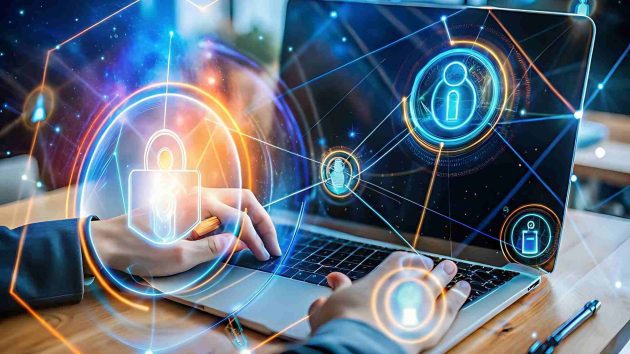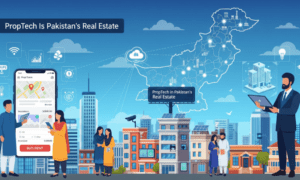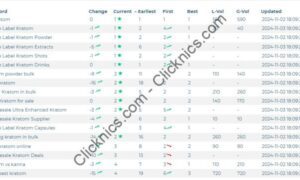With the ever-changing world of the internet these days, companies are finding it increasingly difficult to secure their internet assets. Piracy continues to be a threat and impacts companies from software and entertainment to publishing and web content. Ensuring the integration of best-of-breed anti-piracy solutions is important for companies serious about intellectual property rights protection, revenue streams security, and reputation. This article discusses some of the best anti-piracy measures utilised by organisations nowadays in their attempts to fight piracy in a way that involves innovation and creativity equally.
- Anti-Piracy Security Solutions Balance
Organisations invest considerable time, energy, and capital into creating products and materials. Piracy discourages this by making it easier to use, replicate, and disseminate material without permission. Safeguarding content and software from piracy not only makes it financially viable but also enables organisations to keep producing and disseminating quality products.
The majority of successful anti-piracy solutions achieve a fine line between high security and usability, to provide problem-free usage to law-enforcement end-users while making it difficult for unauthorised players to penetrate.
- With assistance from Digital Rights Management (DRM)
One of the inherent anti-piracy solutions is Digital Rights Management (DRM). DRM technology encrypts digital content and secures use and access to discourage unapproved copying or re-distribution.
DRM solutions enable companies to set how content is used, such as restricting the number of devices which use it or copy it. Powerful DRM guards media such as video, music, ebooks, and computer software and is therefore one of the most effective anti-piracy technologies used today in the digital domain.
- Introduction of Watermarking Technologies
Watermarking is a reasonable and subtle anti-piracy method which inserts concealed signatures into digital content, overtly or cryptically. That allows unauthorised copies to be traced back to their creator, either with an end-user, device, or distributor.
By watermarking content with such material, companies deter unauthorised copying because the higher chance of detection and lawsuit is a strong deterrent. Watermaking is used extensively to video, photograph, and text content and complements technical protection.
- With Advanced Encryption
Encryption transforms information into an encoded format that only the intended recipients can read. With other anti-piracy measures, encryption protects content and information and keeps them out of unauthorised hands.
Secure encryption technologies safeguard data in transit and at rest from theft or interception. This technology element will be the most important feature of the leading anti-piracy solutions, safeguarding data without influencing user experience.
- Monitoring and Automated Detection
Businesses today increasingly use observation software and automated programs that scour the internet, peer-to-peer networks, and file-sharing sites for unauthorised copies of their product or content.
These assets notify rights holders when piracy incidents occur at the optimum time to facilitate easy filing of timely takedown notices or other government action. Automation provides coverage of scope and velocity not feasible by hand, making the methodology unavoidable among leading anti-piracy options.
- Engaging Legal Enforcement and Coordination
Technological measures work best in conjunction with a good legal framework. Companies typically hire regulatory agencies, trade associations, and cybersecurity companies to sue copyrights, send cease-and-desist letters, and initiate litigation against pirates.
Policies specifically, vigorous enforcement, and cooperation with internet service providers and websites give the longevity of anti-piracy campaigns. Legal enforcement is still a significant keystone that serves technological anti-piracy initiatives.
- Educating Customers and Partners
Educational awareness of the effects of piracy and ethical sensibility are the key foundational pillars to fighting the disease. Piracy issues are best addressed by education campaigns raising awareness among customers of the value of original work and the dangers of pirated work, e.g., malware or low-quality work.
Informed consumers would like to support the right sources and discourage piracy sharing. Partner education also discourages distributors, retailers, and partners from compromising on anti-piracy at any level.
- Providing Easy-to-Use and Price-Friendly Legal Alternatives
The best measure in avoiding piracy is by providing easy-to-use, price-friendly, and quality legal alternatives. In responding to consumer backlash with easy-to-use platforms and price-friendly models, businesses defeat markets prior to being pirated.
Self-protection mechanisms like subscription models, rent-to-own models, and secure online marketplaces become legal use simple and appealing, an active positive characteristic of the ultimate anti-piracy solutions.
- Continuous Revision of Protection Mechanisms
Piracy operations are constantly improving, and as such, companies are required to renew their anti-piracy measures and practices from time to time. Constant updating of encryption methods, DRM systems, and detection tools places protection ahead of new methods adopted by pirates.
Sustained advancements and anti-piracy spending in technologies ensure companies have robust barriers in the long term, ahead of destruction, without affecting customer trust.
- Dependence on Multi-Layered Security Mechanisms
No single reliance can be placed upon any single enhanced anti-piracy technique to implement in isolation. Advanced practice deploys multiple levels of safeguarding—technical, legal, educative, and commercial—to implement end-to-end security.
In addition to the combination of technologies such as DRM, encryption, watermarking, and automated monitoring with market remedies and sanctions, corporations take significant steps to minimise the chances of piracy impacting their sales and credibility.
- Using Behavioural Analytics and Machine Learning
One of the newest trends among the best anti-piracy solutions is implementing behavioural analysis and machine learning to spot malicious activity. Such solutions track user patterns of activity with the aim of identifying anomalies that could be indicative of piracy or illicit sharing. With ongoing training and expansion, machine learning platforms can identify potentially malicious activity sooner and more effectively than other methods. It allows organisations to prepare in advance, preventing damage and strengthening defence.
- Fostering Industry-Wide Collaboration and Standards
Piracy is a concern no company can address independently. The optimal anti-piracy approach is open cooperation with cross-industry collaboration and global security practices. Through cooperation, information sharing, best practices, and cooperative enforcement, companies make the total barriers stronger. Cooperative efforts have a safer system that will better protect digital content on sites and borders, for the good of creators and consumers.
Conclusion
Employing the best anti-piracy strategies is an exercise in synergy of state-of-the-art technology, legal enforcement, consumer awareness, and marketplace policy. It is more about being nimble at all times and evolving to confront new challenges while making sure the users enjoy themselves in a safe and comfortable manner.
Organisations that are keen on safeguarding intellectual property can reap great benefits from professional associations. Having on their side the likes of doverunner means efficient, state-of-the-art anti-piracy strategies tailored according to specific needs, safeguarding intellectual work and ensuring longer-term creation in the otherwise brutally competitive online environment.



































